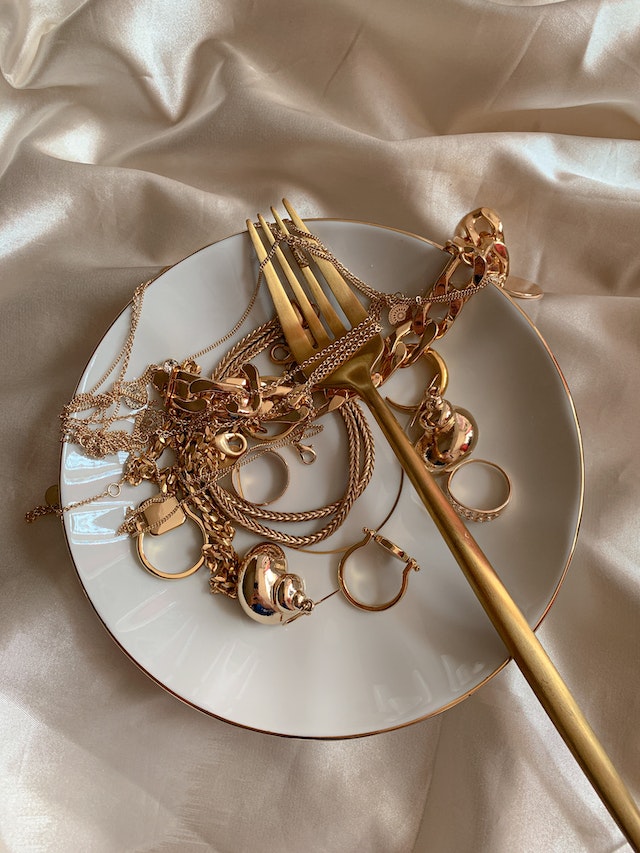From dazzling diamonds to exquisite pearls, jewelry has captivated human beings for centuries. As a symbol of beauty, status, and personal expression, jewelry holds a special place in our hearts and history. Join us as we embark on a glittering journey through the rich tapestry of jewelry history, exploring its origins, cultural significance, and evolution over time.
Ancient Origins: The story of jewelry begins thousands of years ago, with the earliest evidence of personal adornment dating back to prehistoric times. Ancient civilizations such as Egypt, Mesopotamia, and the Indus Valley were pioneers in crafting jewelry from materials like gold, silver, and precious stones. These adornments were not just accessories; they held deep cultural, religious, and symbolic significance. From amulets believed to offer protection to ceremonial burial jewelry, these ancient creations laid the foundation for the art of jewelry-making.
Classical Elegance: The classical civilizations of Greece and Rome elevated jewelry to new heights of sophistication and artistic expression. The Greeks favoured intricate filigree work, delicate gemstone settings, and motifs inspired by nature and mythology. Meanwhile, the Romans embraced grandeur, adorning themselves with opulent gem-encrusted pieces, including rings, bracelets, and necklaces. Their love for colored gemstones, such as emeralds, sapphires, and rubies, set new trends that endure to this day.
Medieval Opulence: The Middle Ages witnessed the flourishing of craftsmanship and the rise of royal patronage in the realm of jewelry. The use of precious metals and gemstones continued, with a focus on intricate designs and elaborate settings. Religious iconography played a significant role, as jewelry became an integral part of religious ceremonies and ecclesiastical regalia. Medieval jewelry also symbolized power, wealth, and nobility, with crowns, tiaras, and brooches adorning the ruling elite.
Renaissance and Baroque Extravaganza: The Renaissance era brought about a resurgence of interest in classical art and culture, influencing jewelry design. The use of pearls, gemstones, and enamel became prominent during this period. The Baroque era, known for its exuberance and theatricality, saw the emergence of flamboyant jewelry designs adorned with large, colorful gemstones, reflecting the opulent tastes of the time.
The Victorian Era: The Victorian era was a time of great innovation and sentimentalism in jewelry design. Queen Victoria’s deep affection for her late husband, Prince Albert, gave rise to mourning jewelry, featuring materials like jet, black onyx, and woven hair. Romantic motifs such as hearts, flowers, and lovebirds became popular during this era. The discovery of new diamond mines in South Africa also led to a surge in diamond engagement rings, forever changing the landscape of jewelry.
Art Nouveau and Art Deco: The late 19th and early 20th centuries witnessed the birth of two distinct artistic movements that left an indelible mark on jewelry design. Art Nouveau celebrated natural forms, flowing lines, and the incorporation of unconventional materials, while Art Deco embraced geometric shapes, bold colors, and streamlined elegance. Both movements revolutionized jewelry design, showcasing creativity and individuality.
Modern Trends: In the 20th century, jewelry design became more diverse and eclectic, reflecting changing social, cultural, and artistic trends. From the glamour of Hollywood-inspired jewelry to the avant-garde creations of contemporary designers, the possibilities expanded exponentially. The use of alternative materials, like plastics and unconventional gemstones, also gained popularity, paving the way for more accessible and affordable pieces.
Conclusion: Jewelry history is a testament to human creativity, craftsmanship, and our deep desire to adorn ourselves with beauty. From ancient civilizations to modern times, jewelry has evolved, reflecting the cultural, social, and artistic developments of each era. Today, we continue to be mesmerized by the allure of jewelry, appreciating both its aesthetic value and the stories it carries. As we look to the future, we can only imagine the dazzling innovations that lie ahead, ensuring that jewelry remains an eternal expression of our individuality and the mark of human ingenuity.
